

A final 'aloha' to 'the Hawaiian'
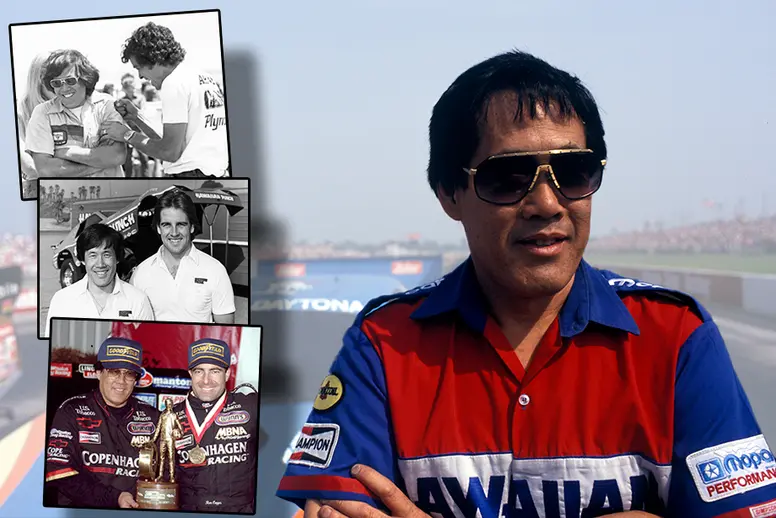
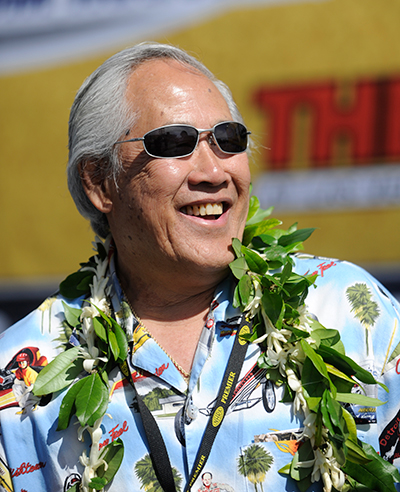
Roland Leong, the irrepressible owner of the “Hawaiian” line of Top Fuelers and Funny Cars, was a part of our drag racing world for seven decades before his passing just after Christmas, and if you were a fan of any kind of racing in that span, you knew his name.
If you were a fan in the 1960s, you knew him as the owner of the gorgeous blue front-engined Top Fueler driven by Don Prudhomme, Mike Snively, and Mike Sorokin.
If you were a fan in the 1970s, he probably came to your local dragstrip no matter where you lived, as he toured relentlessly on the match-race trail, bringing the fabled Hawaiian floppers and his ever-changing line-up of drivers to your hometown or your closest national event.
If you were a fan in the 1980s and ‘90s, you probably remember his Hawaiian Punch Funny Cars with drivers like Mike Dunn, Rick Johnson, Johnny West, Jim White, and Gordie Bonin at the wheel, winning national events and breaking records.
If you’re a newer fan, you probably knew that he was the kick-ass tuner in the Nostalgia Funny Car ranks and, if you’ve been a reader of this column since its inception in 2007, you know that Leong was a good friend and valuable resource to our Insider Nation.
Roland and I shared the same birthday — May 22 — and it just seems like he’s always been a part of my life. I followed his exploits as a young teenager through the pages of the drag monthlies and even though he was generally listed as being from “Los Angeles” ... fact is he lived just a few miles from where I grew up in Southern California, me in Culver City and him in the Marina del Rey area. I didn’t know that at the time (I’d have been camped on his front doorstep if I had). His daughter, Rolanda, went to elementary and junior high with one of my old girlfriends.
I remember seeing Leong on ABC’s Wide World of Sports coverage from the 1970 Nationals, as he was there alongside his lifelong pal Don Prudhomme during one of “the Snake’s” darkest moments, the “I think I’m gonna quit” footage after Prudhomme thought that opponent Jim Nicoll had been killed in their final-round race.
I didn’t know at the time that that was Leong in the frame, and as I got to know them better, it became clear that it was one of their touchstone moments, even though Prudhomme had left Leong’s team after the 1965 season to go out on his own, they still remained friends and did so until Leong’s passing.

After I joined the Natonal Dragster team in the early 1980s, I became friends with Mike Dunn, who was driving for Leong at the time, and met Roland through him. As you may remember, Leong's cars really kicked ass for a time there, from the stunning 5.58 that driver Johnson ran at the 1985 Winternationals — the run that broke Prudhomme's longstanding 5.63 mark — through White’s barrier-breaking 291-mph pass at the 1991 Finals.
Leong’s time as a car owner ended after his sponsorship from the Hawaiian tourism board turned out to be a hollow promise and Leong became an in-demand tuner for those in need and reunited with Prudhomme for “the Snake’s” 1994 Final Strike tour and went on to mentor Ron Capps later in the decade. It was good to have him still in the sport.
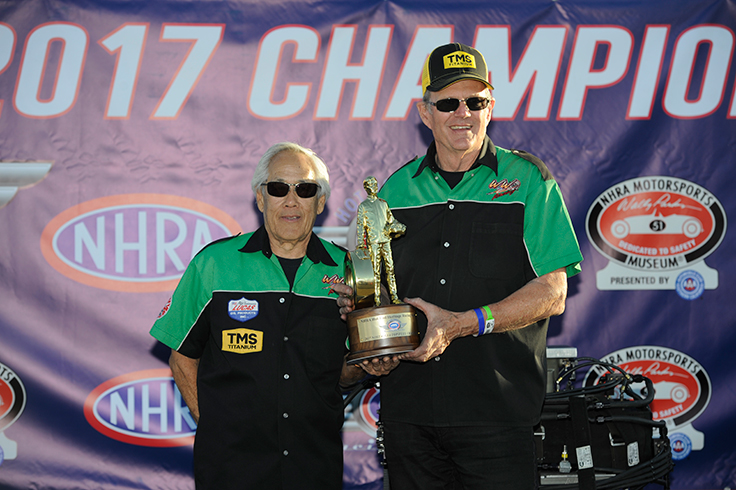
Although Leong’s tuning prowess remained a force in the Hot Rod Heritage Series, I didn’t see him for many years, but we stayed in touch via email and, later, by text. I think I had written a “happy birthday to me” kind of column and Leong seized on that and somehow, as it has miraculously happened with other legends over the years for me, he became a fan of mine through this column, happy to see that someone was curating the past.
The Dragster Insider was still in it’s “what-the-heck-is-this?” phase when Roland invited me to the regular lunch that Prudhomme and many other heroes of the 1960s and ‘70s often held in Southern California, an exclusive sort of Band of Brothers kind of thing. I had never been to one — though I damned sure knew of its existence — and he called to see if I was going to the next one. I told him I’d never been invited to one and I remember him saying “I’m inviting you,” which opened up a whole new world for me with easier and better access to the people I wanted to interview.
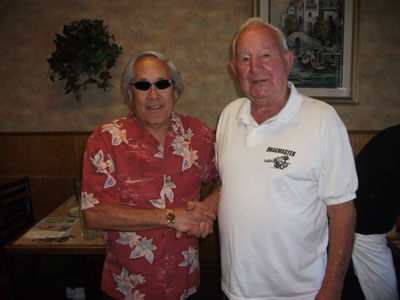
The first person that Leong introduced me to was Dode Martin, of Dragmasters chassis fame, who I later came to learn offered Leong his first California job, making his dream of racing on the Mainland a reality. At right is a photo I snapped that day of them together. I met Tom Jobe, of Surfers Top Fuel fame, as well as guys like Bob Muravez (aka Floyd Lippencott Jr.) and Dan "Buzz" Broussard, owner of the Garrison-Davis-Broussard-Ongais Top Fueler of the 1960s and got to know another of the people I’d admired from afar, Bob Brandt, “the Snake’s" long-time right-hand man.
"You know, to have all of these guys come back together and still be friends all these years later, it really says something,” Prudhomme told me that day as he moved from being the legend I interviewed sometimes to the good friend he is to me today. “To me, it says that drag racing is one of the best things that ever happened to them in their lives."
The Dragster Insider column was never the same after that lunch, so thank you, Roland.
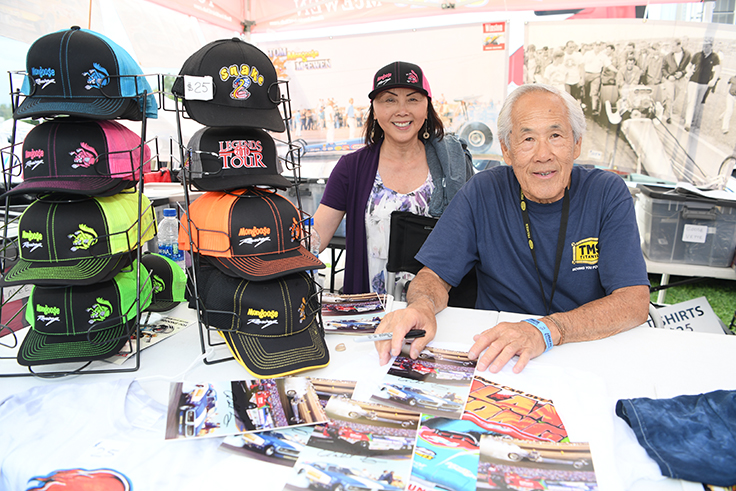
As Leong’s health began to fade in the last couple of years, I still saw him from time to time, usually at the Pomona or Las Vegas events, usually walking around with his longtime ladyfriend Suzie, and still being widely recognized by fans.
I last saw Roland last summer when the San Diego Automotive Museum unveiled its new display honoring Prudhomme, and Roland, despite the challenges, surprised us all by showing up for his lifelong pal, just as he had done since they met as 20-somethings back in the early 1960s. I walked to him and said hello and thanked him for his long friendship, and it was Prudhomme himself who called me on the morning of Dec. 29 to let me know Roland was gone.

I’d just returned from a family vacation and was glad that I was home instead of on the road. As I have done in the past with high-level passings like NHRA founder Wally Parks and Scott Kalitta, I hurried into the office to work on a tribute to him. The office was still closed for the holidays and quiet, which gave me time to reflect and reminisce in peace, and to mourn one of my dear friends.
As I have done with others I’ve lost, I couldn’t bear to delete Roland from my phone contacts, so, as I had done with Tom McEwen, Bill Doner, “Ohio George” Montgomery, my stepfather Lee and stepbrother Mickey, past co-workers, and other racing friends I was proud to have in my digital Rolodex, I simply added a z in front of his name, making it easy to look back from time to time at other friends and family I had lost, and to smile and be simultaneously sad that they’ll never answer another call.
As mentioned, Roland was an invaluable resource for stuff from the past. Among the more memorable columns and articles I wrote with his input was a story for National Dragster about what life on the match-race trail was like, called On The Road Again, 1970s-style, which I posted here a few years ago, an in-depth story about Leong and Prudhomme’s amazing 1965 season, a story on the 50th anniversary of their Winternationals win saluting their long friendship, and the story of Leong’s tough transition from Top Fuel to Funny Car. I also wrote a comprehensive story on all of Leong’s drivers — why they were hired and why they were fired — that I’ll share next Friday.
From all of those stories, here are some of my favorite Roland quotes:
On hiring Prudhomme as his driver: “ ‘Snake’ quit his job painting cars and that was the last time he ever worked. I tease him and tell him, ‘Hey sucker, you’re lucky I wasn’t worth a sh*t as a driver or you might still be painting cars.”
On that 1965 tour: “If we hadn’t gone on tour, we could have just ended up being a couple of Southern California guys who happened to win the Winternationals.”
Racing is life: "We just wanted to race; we'd race on a dirt road if you told us how to get there.”
Funny Cars: “When the Funny Cars first came out with those crazy altered wheelbases, to us dragster guys, they weren’t ‘real’ race cars. Mike [Snively] and I were touring back East in 1968, and I could see that the Funny Car guys were getting a lot more dates than we did. It just seemed like the Funny Cars had become a lot more popular and began looking like real cars. I think I was one of the first of the dragster guys to switch to Funny Car.”
On touring in the 1970s: “It was an experience; for the age we were, it was a helluva experience. We saw a lot of the country, and after we’d been on the road for so long, we got to know people in almost every town, and we’d do something with them, whether it was to go to their house for dinner or go out and do things with them. For me, it was the experience of a lifetime.”

But enough from me. Here’s the recollections of some of his friends and peers:

Leong and Don Prudhomme were friends for more than 60 years, since their chance meeting in Hawaii when the Greer-Black-Prudhomme dragster visited the islands. I’ve written thousands of words about their friendship over the years and “Snake” summed a lot of it up when I called him again earlier this week.
“Roland knew me better than anybody else in racing,” he said. “He was just a constant my whole life and he's outlived many of my other friends, like Tom McCourry and 'the Mongoose' [Tom McEwen]. I'm sure he and 'Mongoose' are together right now raising hell and telling stories. The three of us used to have a great time together, just needling each other. I'm sure 'Goose is busting his balls about his accent.
“I think there's something about best friends, like when you meet a guy you know you're going to be friends for quite a while, and that's how it was when I met Roland in Hawaii. He had this little gas dragster and I helped him load it on the trailer and I just hung out with him and then he took me under his wing and showed me Hawaii and we ate sushi off a roach coach, but it was fresh and delicious, and we were hooked at the hip after that and we just remained friends.
“I got to sit with him at his bedside the last day before he passed. We were talking about we were once kids and, man, what the hell happened? Seems like yesterday we were winning the Winternationals and taking off in that camper we won and didn't even know how to take the mag out of the engine, yet Keith Black let us go out on the road by ourselves. And that's how we learned.
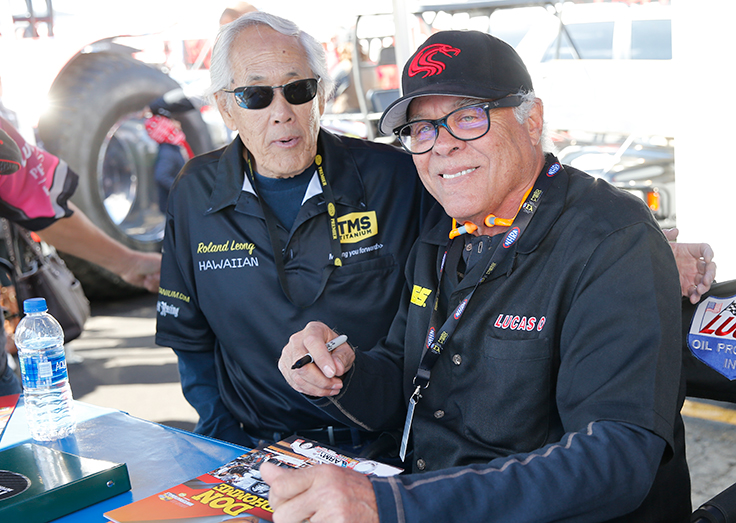
“We both admitted the best times of our whole racing career is when he and I got to race together in 1969 and '70 after his Funny Car crashed. He was tuning the engine and I was driving and we just had a lot of fun and won a lot of races. Roland was smart, he was really good at tuning especially really picking away at a combination. And he just loved all the crew guys and showing them how to do it and making a living at it because when we started, you couldn't make a living, and now you can.
“When he was sick, he would have the TV going with the race on and his computer going. He would know every number that people were running. I never, ever have met a guy who loves drag racing as much as him. Maybe Don Garlits, but Roland was just ate up with it.”
Like me, three-time NHRA Funny Car world champ Ron Capps grew up as a fan of the sport and admiring Leong; unlike me, he got a chance to live and work with him for almost two years when Prudhomme hired his old buddy to right the floundering ship that was Capps’ 1997 debut season in Funny Car.
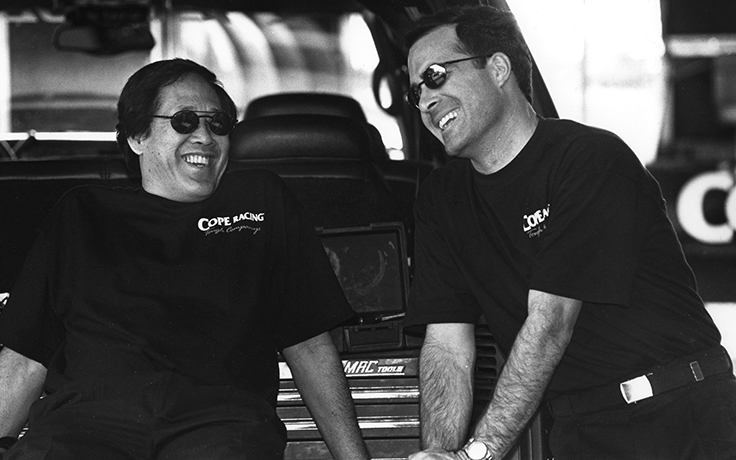
“Tom Anderson was our crew chief and, if you remember, we didn’t even qualify at the first race in Pomona [fourth alternate!] ," said Capps, "and I just remember when we got to Richmond [the sixth race of the season], ‘Snake’ told me, ‘I’m bringing in an old friend to help,’ and that was Roland, and it was amazing how he just reset my whole life, my whole career.
“He just said, 'We're gonna go back to square one; we're just gonna pick away at it. We're gonna get a baseline,’ and it was like my career was starting over and I was learning from you him. I always joke that he was like Mr. Miyagi. and I was the Karate Kid because I basically had to start all over learning how to drive and all of a sudden the car went down the track every run and I didn’t have to pedal it, and then he just started tickling away at it. In the meantime, he and I rode together and we traveled together. We shared a rental car. So, every morning I rode to the track with him and every night rode back. and dinner every night with him and all of the stories that I'd read about in magazines growing up, I would hear from him firsthand. We were attached at the hip, and then we broke through [for the first win] in St. Louis and the rest is history.
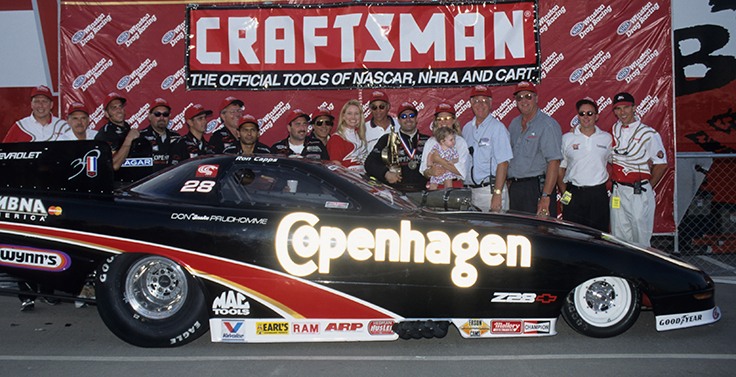
“I just had so much respect for him, and he was my first real tutor on how to drive a Funny Car but, man, sometimes he was just a 12-year-old, and I mean that in the best way possible. We could be in the final round of a race. and he's standing in front of the car and getting ready to fire the car up, and he'd turn and say the most 12-year-old joke to me. At times, he acted like a kid, like my son. And boy, he could laugh. You’d get him laughing at some stupid joke and he’d laugh his ass off. It was cool, man. I’m so lucky to have had that time with him.
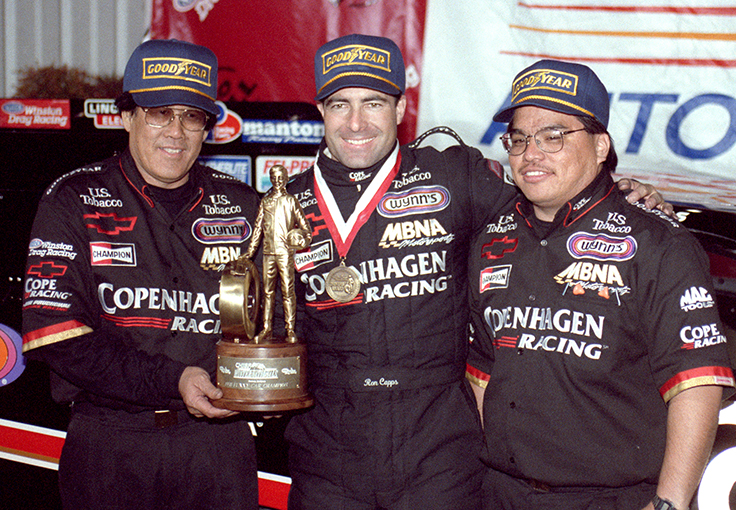
“One thing I have to say though, is that it has always aggravated me a little bit when people would write about the most influential people in drag racing history and they leave Roland out. When you look at what Roland did, and the history from the time he started, I've always thought that he should have been ranked higher. When you look at what happened in 1965 and how it triggered the rest of history with him and 'Snake' getting together and winning the Winternationals and then Indy and then what he did with all of his other drivers, he had a huge influence on the sport. And if you look at the guys who were on our team back in 1997-98 — Nicky Boninfante, Aaron Brooks, Todd Okuhara, Brian Vanetti, Tommy DeLago — we all learned so much from him, and all of the drivers he hired, and the sheer amount of people he either touched or created these forks in the roads of NHRA history. It’s really amazing.”

Ed McCulloch, who also was part of that On The Road story referenced above, traveled the same match-race roads as Leong back in the 1970s and knew him well.
"We ran a lot of match races back in the day and his cars were always competitive,” he told me earlier this week. “I'll never forget that he always called me 'Edward.’ My given name is Edwin — I've always gone by Ed but my given name is Edwin — but Roland always called me Edward. You know, ‘How are you doing, Edward?' I think probably he just thought that that was my name and I never bothered to correct him.
"I’ll never forget that when [Art] Whipple and I first went back east, the first year we went on tour, we hooked up with Roland and we were running a lot of match races together. We had this orange Dodge crew cab towing a trailer, and Roland had his ramp truck. One Saturday night we were leaving Martin, Mich., and had to be in Minneapolis the next day, so we're hauling tail. Roland decides he's gonna ride with us and just goes to sleep in the backseat. All of a sudden Roland's truck stops because it had a universal joint go out. We unhooked our trailer, Art and I took the driveshaft out of his truck, went down the road, got a u-joint put in, put it back in Roland's truck, and all the time Roland was asleep in the back of our truck.”

With a total span of seven years, split pretty evenly between crewmember and driver, Mike Dunn probably holds the Roland Leong Longevity Award. Dunn had learned at the knee of his father, “Big Jim” Dunn, and was already well-versed in working on a nitro Funny Car when Leong came calling in the summer of 1977 looking for an able crewman and, as always, a future driver, which Dunn became in mid-1980 when he shared the ride with Ron Colson, before taking over fulltime in 1981 and racing with Leong until July 1984 when a drivetrain failure broke his leg.
“As far as my record on the track with Roland, to say it wasn't great would be an understatement — I mean, I did win my first race with him [Fremont 1981] and we won the Match Meet together in 1983 — but I never crashed a car before Roland, and I never crashed a car afterward, but I crashed four of them with him.
“Someone could say, 'That was a disaster,' and I wouldn't argue with them, but there's so many memories of on and off the track that I had with him. He was completely the opposite of my dad; he was just happy-go-lucky.
“Roland hired me in June of 1977, and it was right after Colson had backed the car into the guardrail in Columbus. I was still living in California and Roland put me in charge of going to Fiberglass Trends and shipping a new back half to him to Colson’s place in Chicago and flying with it back to O’Hare [airport]. So I get there on a red-eye, probably 6 a.m. Chicago time, and Roland is nowhere to be seen. I don't know anybody in Chicago and, of course, there’s no cellphones.
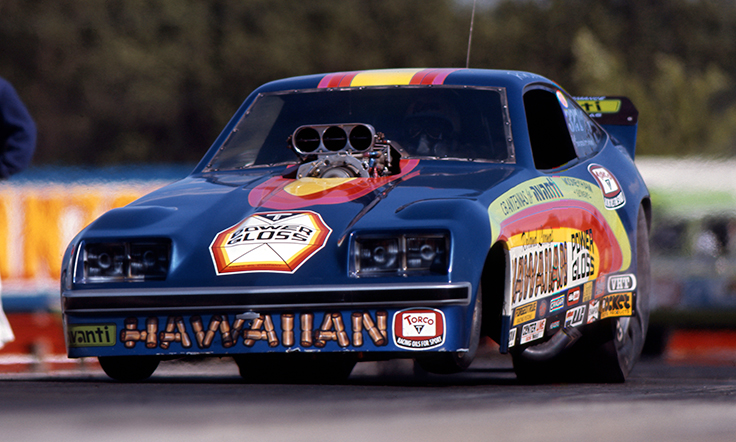
“He finally comes tooling up an hour late -- he said he overslept -- so we go pick it up at cargo and he says, ‘Just throw it in the bed of the truck.’ It was still crated up, and the whole thing probably only weighed 100 pounds because it’s just the back of the body. Anyway, we're going down Mannheim Road heading towards the turnpike, and the box goes flying out of the bed and ends up in the four-lane, and I thought ‘Holy shit, he’s going to be mad,’ and he starts laughing. If that had been my dad I would have gotten an ass whipping right there, but that was just the way Roland was and kind of set the tone for me of what it was like to work for him. We just threw a U-turn and went back to get it. Even all of the crashes we had, to him, sure, he was upset, but with as many runs as he’d made, he knew that crashing was just part of racing.
“We parted ways in ‘84 and a few years later he called and wanted me to come back and drive for him but I turned it down, but we always remained friends. I learned a shitload of stuff with him. He taught me a lot, and we had a lot of fun. The one thing that he was always proud of is that I met my wife, Sandy, through him. We were at Union Grove at the Olympics [of Drag Racing] on Memorial Day weekend in 1982. There was a party at the Holiday Inn where everyone stayed and I saw Sandy but I was too shy to say anything, so Roland got her to come over and introduced me to her, so I’m forever grateful for that.”

Drag racing historian and author Lou Hart had been working the last two years on a book about Leong that thankfully went to print and was delivered to Roland in the weeks before his passing. I asked him to share his memories of working with Roland on the book and all that he learned from one of the sport’s masters.
“I've gotten to know Roland personally for around 20 years and he's always graciously granted me interviews, stories, and memorable moments when I began writing my earlier photo archive books,” said Hart. “I thought it was cool when we would see each other down on the starting line when I was shooting at the drags and he remembered me and called me by my name.
“I often would visit him and Suzie at his home in L.A. We would have lunch, talk drag racing and I would inhale his racing stories and adventures from back in the day. I always thought, with all his accomplishments and his history in drag racing, why there wasn't a book written about his legacies. I visited Roland at his home in September 2021 and we got to talking about Don Prudhomme's new book and showed his copy to me about the chapter where Don drove the Hawaiian and the accomplishments and good times they had together during that special year.
“I asked him how about writing a book on his life. At first, he shrugged it off but I think Roland wanted Prudhomme's author [Elana Scherr] to write the book, but she was unavailable being out of the country on an extended assignment. After several more attempts offering to do the project, Roland asked and got Prudhomme's approval. Roland finally agreed and the project started in March 2022.
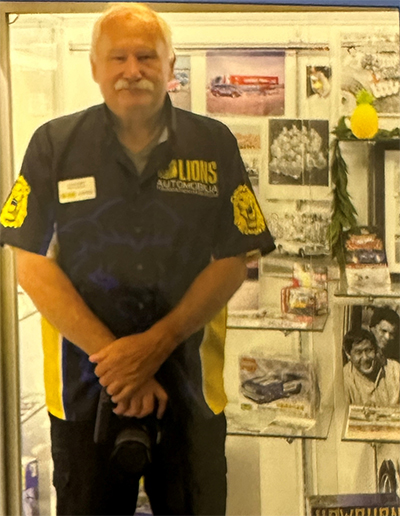
“The project for me was a writer's dream. Roland had a treasure trove of reference photos, many unseen of his personal life and racing out on the road). He had a library of printed information, saved newspaper clippings including the ones in Hawaii his mom saved. and all of his memorabilia that was available. so it was easier to finish the book in nine months instead of the 12 allotted months. (I kind of went overboard, I submitted more material to CarTech as they had to cut out two chapters and roughly 50 photos.)
“His moods were always positive, wanting to talk about his racing days, which I think Roland enjoyed. Not long after, I felt that he was struggling to talk, which was starting to take a toll on him. When he was breathing full-time on oxygen, It was harder to have him talk over the phone. I felt terrible for him, struggling at times to breathe, so I visited him at home, usually a few times a month and not staying more than one hour. I recorded every conversation with him.
“The project was completed in December 2022 and was to be published and released right after Labor Day [2023]. Both Roland and I were to receive advanced copies of the book days before their availability. When he finally got his copy, I texted him and asked him to please let me know what his thoughts were as at this point, I was on pins and needles just hoping it met his approval. Forty-five minutes later, he sent a reply in a text was a "thumbs up!" Less than an hour later, a second text was received with another "Thumbs Up" with the message ‘UR Welcome...Going to try and sell at the Reunion and Nitro Revival.’ To me, that boosted his spirits!
"Roland, Don Prudhomme, and Roland's family attended a book signing at the Lions Drag Strip Museum that was a success. It was great to see his spirits lifted by the people who came to see and talk to him. The following week Roland was signing books at the Wally Parks Nostalgia Nationals at the Famoso Dragstrip, which would be Roland's last appearance at a racing event.
“We exchanged Thanksgiving greetings and I knew his time was limited. I asked if I could come visit him but he wanted a day's notice when I was to come. My last email to Roland was on Christmas Eve wishing the family Merry Christmas and planning to visit for this week to see him. Usually quick to reply, I didn't hear back.
“I'm blessed to have known Roland and honored to write his autobiography on his life of family, his failures, and his successes in life and racing. My friendship was strengthened by knowing him, and his life lessons taught me that anyone can accomplish anything in life.”

As you have read, Roland touched so many people in his life and he never seemed to forget those people. Once you were his friend, you were his friend for life. My National Dragster compadre, Kevin McKenna, knows this all too well. He first crossed paths with Leong through Colson, who had hired him and Bret Kepner to staff United Racer, the monthly newsletter of the United Drag Racers Association that soon switched to a bi-weekly newspaper that covered every aspect of drag racing and became a respected voice as an independent publication.
“Roland was one of the first big ‘stars’ I met when I moved to Chicago and started working for Colson in the mid-1980s,” he said. “Roland used to bring his operation to Colson’s house in the summer including the one time his 18-wheeler destroyed Colson’s prized flower garden.
“One memorable weekend, Colson and I were returning from the Pop Rod race in Martin, Mich., late Saturday night. Colson told me that we were bringing Roland to Chicago so he could make his early morning flight. I was prepared to yield the front seat to Roland, but he wanted to sit in the back so he could count his T-shirt money. Colson had a habit of falling asleep at the wheel, so I was chosen to drive.
“I was 18 years old and very new to the area, but I had to find my way to O’Hare Airport in the middle of the night. This was long before cell phones and GPS but I made it in time for Roland to catch his flight. He thanked me with a Hawaiian Punch t-shirt, which I still have. From that day on, Roland always treated me like a long-lost friend, and for that, I’m forever grateful. Godspeed, Roland.”
Thanks, Roland, from all of us whose lives and hearts you touched. We'll never forget you. Aloha, my friend.
Phil Burgess can be reached at pburgess@nhra.com
Hundreds of more articles like this can be found in the DRAGSTER INSIDER COLUMN ARCHIVE
Or try the Random Dragster Insider story generator



















































